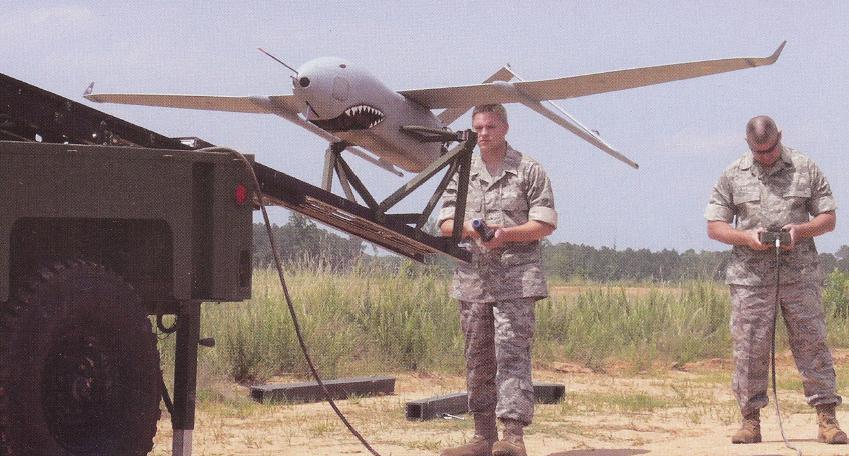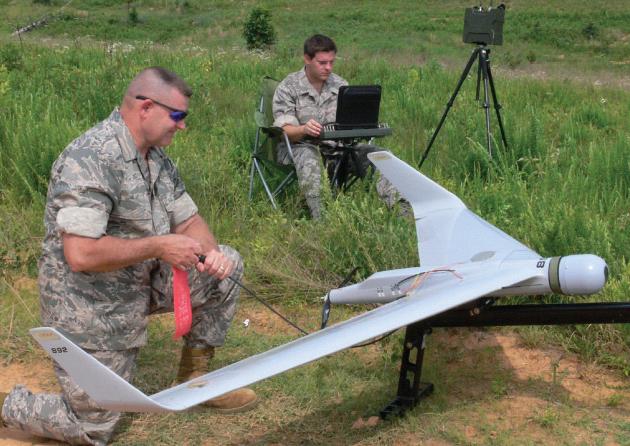This summarizes a selection from 215 applications for the Experimental Radio Service received by the FCC during October, November, and December 2011. These are related to AM broadcasting, FM broadcasting, spread spectrum on HF and VHF, unmanned aerial vehicle control, electronic warfare support, small satellites, white space technology, video production, managed access, TV interference, RFID, and radar. The descriptions are listed in order of the lowest frequency found in the application.
Archive for the ‘Terminals’ Category
Experimental Radio Applications at the FCC
Sunday, February 5th, 2012Experimental Radio Applications at the FCC
Sunday, November 6th, 2011This summarizes a selection from 173 applications for the Experimental Radio Service received by the FCC during August and September 2011. These are related to long-range low-frequency radar, amateur radio, shortwave data, wireless microphones, single-sideband, mine detection, millimeter-wave communications, signal intelligence, automotive radar, satellite feeder links, meteor-burst communications, aircraft telemetry, white space systems, border security radar, 3G and 4G applications, RFID, wind turbine testing, unmanned aerial vehicles, spacecraft telemetry and control, aircraft passenger broadband, and autonomous aircraft landing systems. The descriptions are sorted by the lowest frequency found in the application.
Experimental Radio Applications at the FCC
Monday, January 3rd, 2011This summarizes a selection of applications for the Experimental Radio Service received by the FCC during December 2010. These are related to FM broadcasting, Positive Train Control, TV white space, mobile satellite terminals, GSM, UMTS, through-the-wall surveillance radar, troposcatter communications, millimeter-wave propagation, flight test telemetry, Doppler weather radar, and air-to-air military radar.
Experimental Radio Applications at the FCC
Sunday, July 4th, 2010This summarizes a selection of applications for the Experimental Radio Service received by the FCC during June 2010. These are related to aircraft systems, WiMAX, sports telecast support, public safety communications, tactical cellular service, medical telemetry, satellite, antennas, radar, white-space devices, weapons telemetry, spacecraft communications, and broadcasting.
- AAI/Textron Systems Corporation filed an application (with supporting exhibits) for experimental license. The company wants to test its Shadow 200, Aerosonde, Orbiter and other unmanned aircraft systems. This is related to work for the United States Marine Corp. Operation is to be on 310-390 MHz, 902-928 MHz, 1090 MHz, 1350-1390 MHz, 1700-1859 MHz, and 4400-4999 MHz. Transmitting equipment is manufactured by Microhard Systems Corporation, Free Wave Technologies, Advanced Microwave Products, Global Microwave Systems, and Microair Avionics.
FCC staff has asked for several items of information before approving the application. The FAA operates in the frequency bands 328.6-335.4 MHz, 1090 MHz, and 1215-1390 MHz; FCC staff asks for coordination of these bands with the FAA Regional Office. In addition, the frequency bands 225-328.6 MHz and 335.4-399.9 MHz are used for military purposes, and the applicant was asked to coordinate with NTIA’s Interdepartment Radio Advisory Committee (IRAC).
- AAI/Textron Systems Corporation also filed an application (with supporting exhibits) for special temporary authority to operate on 420-450 MHz and 2000-2400 MHz for a government project apparently involving the Orbiter miniature unmanned aircraft system. There is not much information about the proposed operation, and FCC staff has asked for more details.
In correspondence to the applicant, FCC staff notes that the “Aerospace & Flight Test Radio Coordinating Council (AFTRCC) oversees the frequency bands; 1435-1525 MHz, 2310-2320 MHz, and 2345-2390 MHz. These frequency bands need to be removed or need to be prior coordinated.”
- Sportvision filed an application (with supporting exhibits) for special temporary authority for testing of an automobile race track wireless data system that is to provide data communications between vehicles in a race track and one or more fixed base stations installed along a track. Operation is to be on 2395-2400 MHz.
One application seen for this system is video image enhancement for television broadcasting of automobile racing events. The would allow television viewers to see, displayed on screen, the real-time location of cars during a racing event.
The vehicles would be equipped with GPS receivers and other sensors that generate a data packet every 200 milliseconds. The wireless system would collect those packets and deliver them to a control station in real time. “The radio itself is a direct sequence spread spectrum unit, using production radios for 2.4 GHz. The system may ultimately be deployed on an unlicensed basis in the 2.4 GHz band or elsewhere, but the high noise levels in that band in the test locations (commercial automobile race tracks) are unsuitable for development and testing of the product.”
“An Intersil baseband processor performs the Direct Sequence modulation and demodulation. It is part of a five-chipset developed for the 802.11b standard. It uses 1/4th of the standard 802.11 speed resulting in a narrow occupied RF bandwidth.”
The frequency band requested is allocated on a primary basis to the Amateur Radio Service, and coordination is to be performed with the ARRL. This application was granted on June 4.
Experimental Radio Applications at the FCC
Monday, May 17th, 2010.
This summarizes a selection of applications for the Experimental Radio Service received by the FCC during April 16 – April 30, 2010. These are related to GPS, ultra-wideband, high-frequency radar, mobile satellite antennas, and flight test telemetry.
- Starling Advanced Communications filed an application (with supporting exhibits) for special temporary authority to test vehicle-mounted Ku-band transmit/receive satellite terminals. Data rates will vary from 128 kbps to 2 Mbps. The tests will use the following satellites: Horizons-1 at 127° W.L., Galaxy 17 at 91° W.L., Galaxy 19 at 97° W.L., and Galaxy 16 at 99° W.L.. Operation will be on 14.0 – 14.5 GHz.
- The Los Angeles County Sherriff’s Department filed an application for which all details are not publicly available due to a request for confidentiality. From available exhibits, it seeks to conduct field testing and evaluation of a through-the-wall surveillance radar prototype developed by Akela, Inc. It appears operation will be in the band 500-3600 MHz.
- The Geophysical Institute of the University of Alaska Fairbanks, filed an application (with supporting exhibits) for experimental license to operate equipment in support of the SuperDARN radar network, which is used for research on the upper atmosphere. The equipment to be used is in prototype form from Leicester University in the UK. Operation is to be on various frequencies from 8 to 20 MHz.
- DRS Codem Systems filed an application for which confidentiality was requested. From available exhibits, the test seems to involve the company’s DRS’s X-Band vehicle-mounted satellite-terminal antenna system.
- Blue Origin, an aerospace research and development company developing commercial space launch vehicle technology, filed an application (with supporting exhibit) for experimental license to support command and telemetry communications testing in support of its New Shepard project, which consists of two vehicles that are attached at launch but separate during flight. Blue Origin conducts flight testing of these vehicles at its test facility in Culberson County, Texas. Each vehicle needs a separate command and telemetry link. Blue Origin already has authorizations for 2069 MHz, 2202 MHz and 2250 MHz. This application adds 2042 MHz.
- Raytheon Missile Systems filed an application (with supporting exhibit) for experimental license for missile communications testing. Three radio systems related to range safety are to be tested, and include a Flight Terminate Receiver operating on 420-430 MHz, an S-Band Telemetry transmitter operating on 2200-2290, 2310-2369, and 2360-2390 MHz, and a C-Band transponder operating on 5400-5900 MHz.
- Greenwood Telecommunications Consultants filed an application (and supporting exhibit) for experimental license to test an in-building GPS navigation network solution developed by Insiteo SA, a French company. Operation is to be on 1563-1589 MHz.
- Lockheed Martin filed an application for special temporary authority to test strategies to mitigate the impact of co-frequency Radionavigation Satellite Service (e.g., GPS) signals on the operation of a TPS77 radar signal. Operation will be on 1215-1400 MHz.
Experimental Radio Applications at the FCC
Sunday, February 21st, 2010This summarizes a selection of applications for the Experimental Radio Service received by the FCC during February 13-20: landslide monitoring, WiMAX, earth-station antennas, radar, military mobile data, automatic aircraft landing, psyops transmission.
- Skyport Global Communications filed an application (with supporting exhibits) to test a 55cm slot-array X-band antenna manufactured by EMS Technologies on 8218-8400 MHz. The test will be done using a satellite link between the 55cm antenna in Atlanta, Georgia and a hub in Houston, Texas using the XTAR LANT X-band satellite.
NTT DOCOMO develops 8-band power amplifier for mobile phones
Friday, January 8th, 2010NTT DOCOMO announces development of a prototype multi-band power amplifier that accommodates eight frequency bands between 700 MHz and 2.5 GHz. Such technology will make multi-band multi-standard phones more practical.

DOCOMO will present the new amplifier on January 11 at the 2010 IEEE Radio and Wireless Symposium in New Orleans.

